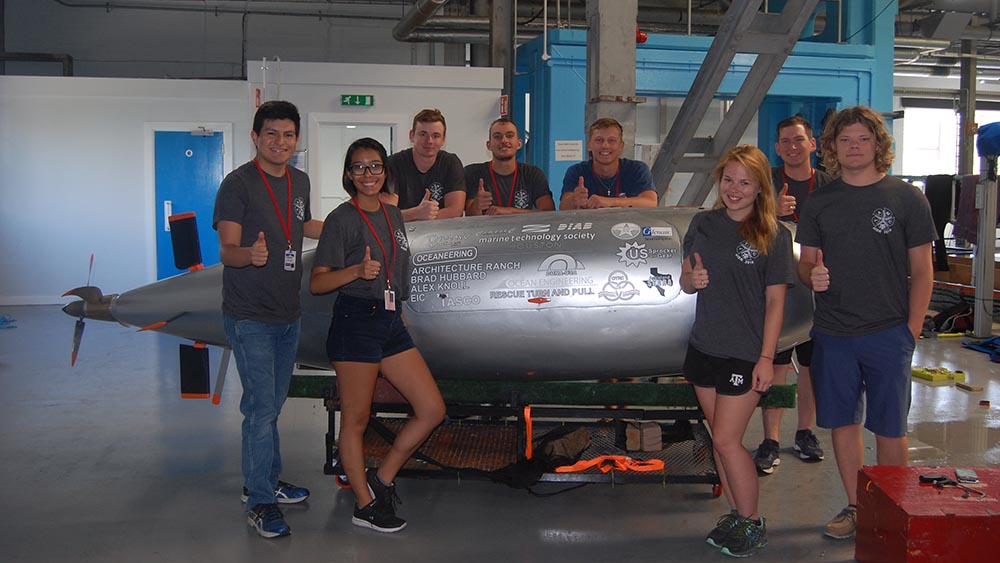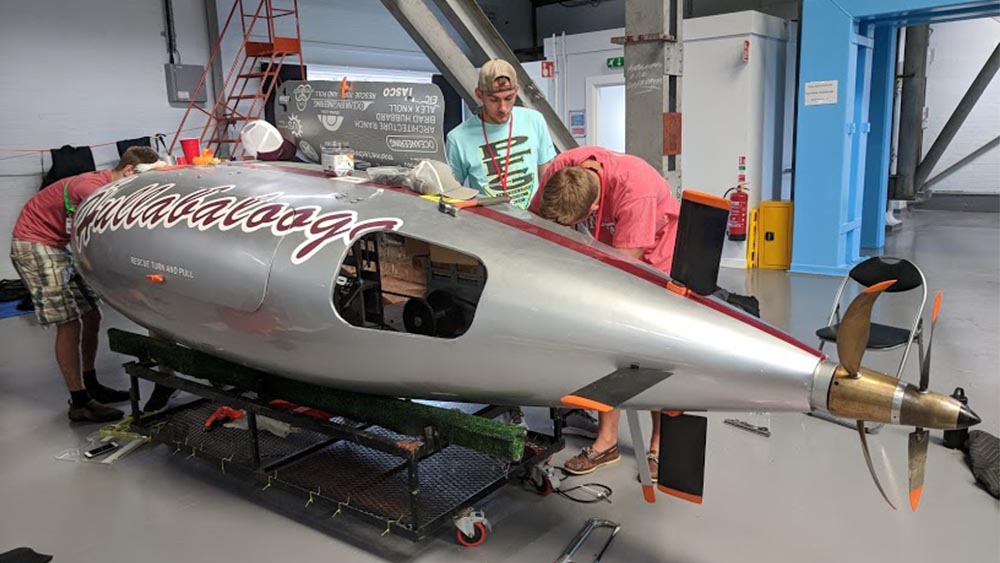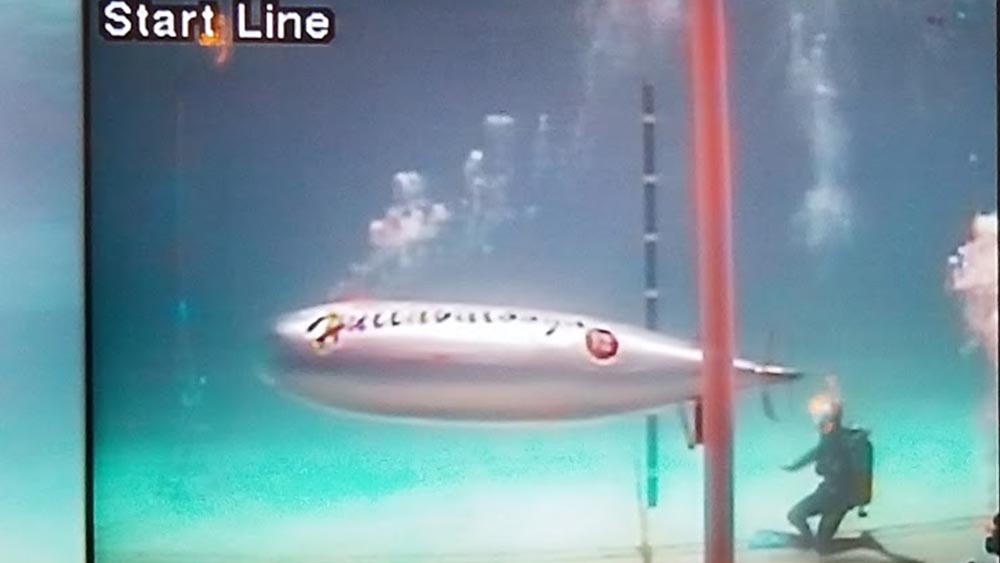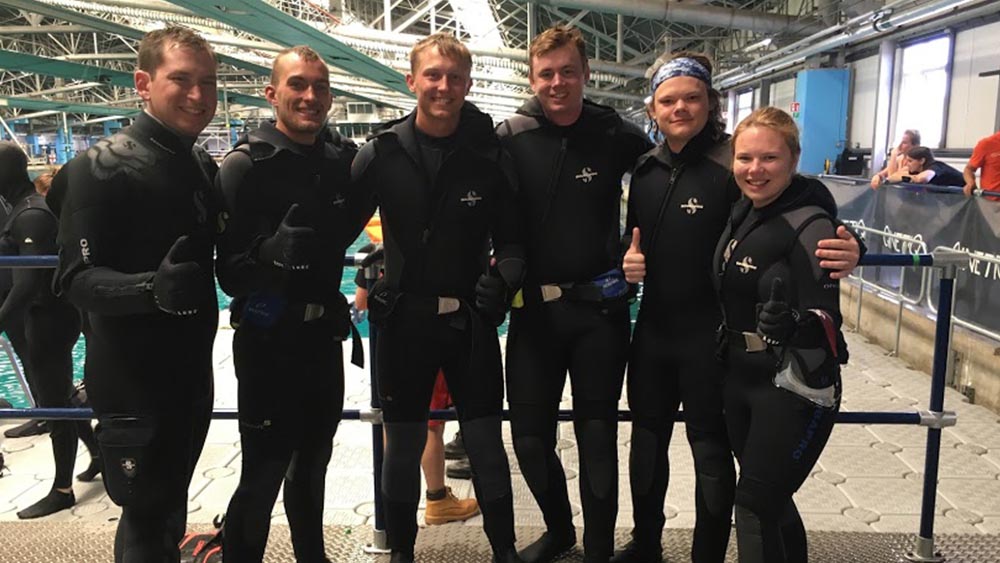
Working on a tight deadline might be a harrowing experience for most students, but Texas A&M University’s human-powered submarine team is no stranger to racing against the clock with members working in a tight space underwater in a high-pressure situation to pilot a human-powered submarine across the QinetiQ’s Ocean Basin in Gosport, England.
The team designed and built a human-powered submarine, the Hullabalooga, and competed in the European International Submarine Races July 3-13. The team is comprised of students from the Department of Ocean Engineering.
A great deal of troubleshooting and trial and error takes up most of the time, so you can have the hull built in a year and everything in it, but it might not necessarily be working, and it can take another year to figure it out.

The team raced against 11 other university teams from the United States, Canada, Poland, Germany and the Netherlands and was awarded “Best Co-ed Team.” Hannah Toerner, team captain
“The people who are physically building the submarines are not the same as the people that designed it because the process takes so much time,” said Toerner.
The team is one of the few that designed, built, tested and funded their submarine for the competition themselves. The Hullabalooga is a tear-shaped, two-man submarine that is 12 feet in diameter and 5 feet in width. Toerner said the building process itself takes about two years and the shell of the submarine must be built first before anything else to allow for trial and error during the rest of the process.
“A great deal of troubleshooting and trial and error takes up most of the time, so you can have the hull built in a year and everything in it, but it might not necessarily be working, and it can take another year to figure it out,” said Toerner.

Currently, testing is being conducted in the wave basin in the Offshore Technology Research Center (OTRC) at Texas A&M. The OTRC wave basin is 150 feet long by 100 feet wide by 20 feet deep and allows for safety features, ballasting and proper functioning of the submarine to be examined and adjusted. However, the basin does not allow for full speed testing because of its dimensions.
“We can test out at the ORTC but we can’t go very far because it’s not a huge tank and so a lot of the issues we encountered, we didn't know we had them until we got to the race last year,” said Toerner. “We took what we had last year and then fixed it for this year and were successful.”
A significant challenge the team faced was not being able to have the students who designed the original drive system present to help guide them through the testing and trial phases, making it a multistep process to get the submarine running properly.
“They’ll support us in every way, but they can’t be here to say, ‘That is not how it is set up,’ and so it’s kind of hoping for the best,” said Toerner. “There was that kind of difficulty transitioning from one class to another without much to go on.”
Toerner co-controlled the submarine with a teammate underwater during the race. They sat back to back in the submarine, and peddled and steered the machine. During the testing phase, there were some issues with operating the vessel that they needed to adjust to get it competition-ready.

Only eight out of 15 members were able to compete, but even those who weren’t present were still engaged throughout the duration of the race, including Toerner’s younger brother.
“They were calling and FaceTiming us trying to see how it was going,” said Toerner. “If we had any questions, we would call them because they had been working on this just as much as us.”
Toerner said her experience as team captain has developed her time management, people management
“You can be a great engineer, but if you can’t communicate those ideas then there's no point,” said Toerner. “You learn all of this stuff in class like fluid dynamics, balance